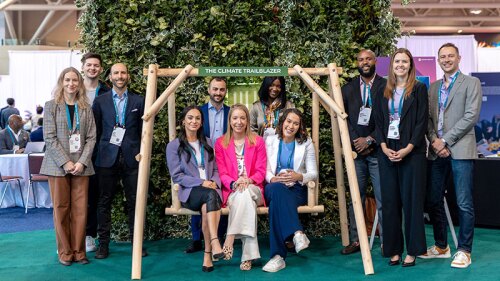A new report from ULI Washington finds that the majority of millennials living in the District of Columbia and the adjacent suburbs of Maryland and Virginia are satisfied with their current housing, neighborhoods, and transportation alternatives, but many are uncertain about their ability to afford city living as they age and their lifestyles change.
Millennials Inside the Beltway: Optimistic Urbanists reflects responses from 1,344 millennials living inside Washington’s Beltway, the interstate bypass that rings the District and close-in neighborhoods. Two-thirds of the respondents rent and 28 percent are homeowners. Of those who rent, 62 percent are either satisfied or very satisfied with renting, and three-fourths believe their current residence is large enough to meet their needs. Among homeowners, 100 percent are either satisfied (30 percent) or very satisfied (70 percent) with their home, and 59 percent believe their home to be a good investment.
The survey found millennials in the Washington metro area to have higher levels of income and be more educated than millennials in the United States as a whole. The majority of both renters and homeowners are happy with the proximity of their housing to parks, public transit, entertainment, and shopping; neighborhood walkability was ranked as a high priority. However, opinions were more mixed regarding general neighborhood safety and the maintenance of streets and sidewalks.
The survey results were presented by Yolanda Cole, chair of mission advancement for ULI Washington and principal at Hickok Cole Architects, at a ULI Washington program held earlier this month. Cole noted that while it is encouraging that millennials in the city seem satisfied with their current housing and their quality of life, it is important to consider what must be done to keep this key cohort in the city as they age, marry, and have children. “This is not just about real estate. It’s about the economic health of businesses in our area,” she said.
The district council program featured a response panel of ULI Washington Young Leaders: Marta Lopez, project coordinator for the Buzzuto Group; James Nozar, senior vice president of development, the JBG Companies; Brant Snyder, vice president, Lowe Enterprises; and Rhea Vaflor, design director of lifestyles at Hickok Cole.
The top advantage of city living, according to the panelists: walkability. “I love being able to walk wherever I want to go,” Lopez said.
“I enjoy driving in the city,” said Snyder, “but my wife walks everywhere. It’s great.”
One top disadvantage of city living cited by the panelists: public school quality and safety. Snyder, for instance, noted that though his family likely will stay in the city until his child finishes elementary school, he is considering moving to the suburbs for the middle school and high school years. (Seventy-seven percent of the respondents living in the District indicated that they would be more likely to stay in the city if they could have greater certainty that their children could attend a good public school or charter school.)
In terms of affordability, each of the panelists pointed to the area’s high cost of living, particularly for families paying for day care. All the expenses make it difficult for millennials to save for a downpayment on a home with the features they want and in a location they desire, they noted. “Making the numbers work is hard,” Lopez said.
Among the respondents, 62 percent currently live in the District, 21 percent inside the Beltway in Virginia, and 17 percent inside the Beltway in Maryland. Within each group, the number expecting to still be living in their current location in three years was notably lower: in the District, the percentage fell to 36 percent; in Virginia, to 13 percent; and in Maryland, to 11 percent.
While 63 percent of the renters aspire to own a home within three years, 58 percent said they would have to move outward beyond the Beltway to find a desirable, affordable home. “The high cost of housing in the District and the close-in suburbs is the most critical factor limiting the potential for millennials to stay,” the report concludes.
Millennials Inside the Beltway was prepared by ULI governor M. Leanne Lachman, president of Lachman Associates in New York City, and Deborah L. Brett, founder of Deborah L. Brett & Associates in Plainsboro, New Jersey. Lachman and Brett also prepared Gen Y and Housing: What They Want and Where They Want It, a ULI report examining the housing preferences of millennials nationwide, which was released earlier this year.
Trisha Riggs is vice president for communications and global speechwriting at ULI




